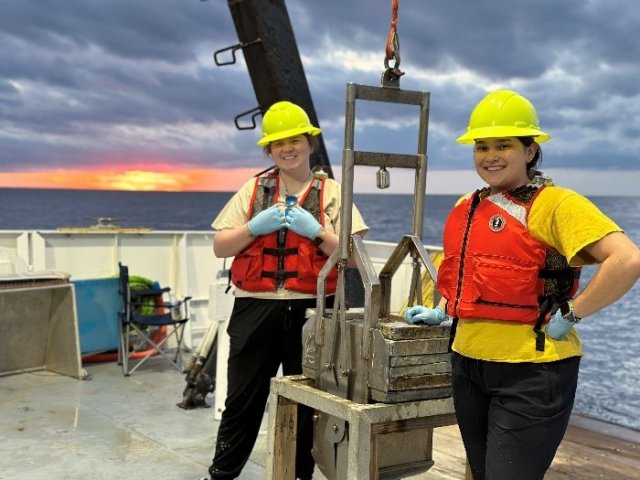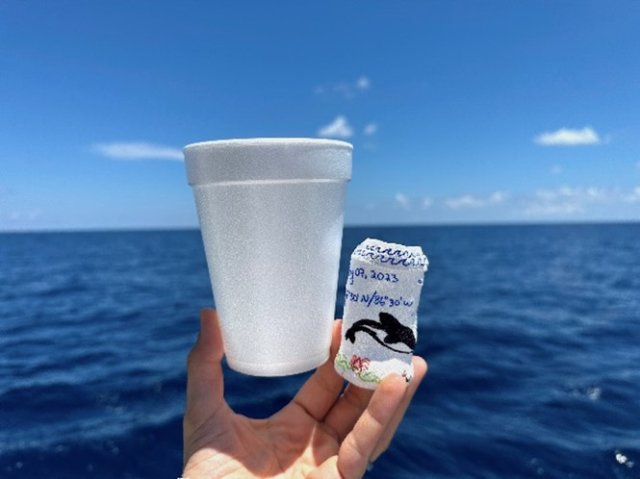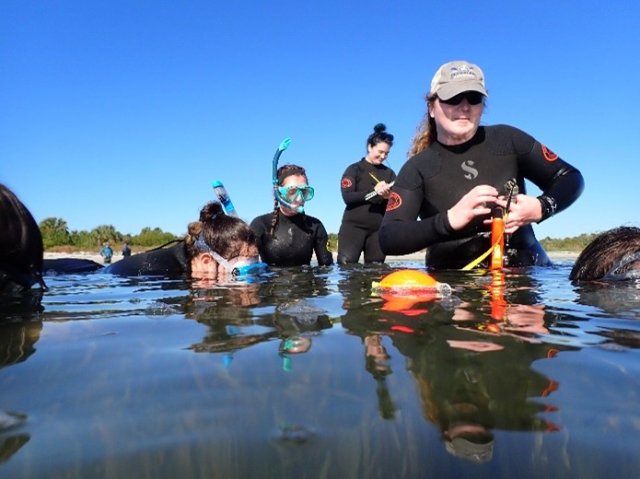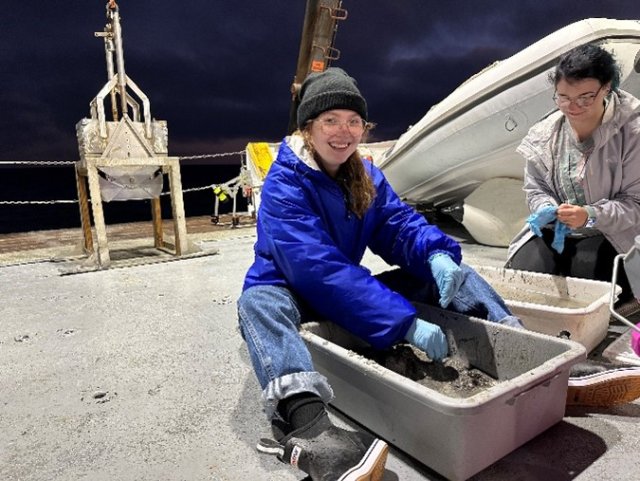Exploring the Depths: A Journey aboard EPA & University of Southern Mississippi’s STEM Marine Science Cruise
Published January 23, 2024


EPA researchers guided students from the University of Southern Mississippi (USM) as they embarked on a week-long liveaboard science cruise that delves into the realm of field techniques, marine biology, and applied science. This immersive experience takes students into the heart of the Gulf of Mexico, where they live, work, and learn alongside EPA scientists from a range of disciplines.
The inaugural science, technology, engineering, and math (STEM) cruise set sail in the summer of 2023 and has embarked three times since then. While each trip is a unique exploration, a typical week at sea includes guided lab work, lectures from scientists, and hands on, immersive research.
Curious about what a week aboard the Marine Science Cruise looks like? Here is a rundown of the summer 2023 trip:
Day 0: Setting the Stage
As the science team loads equipment and sets up the laboratory, the crew prepares the 135-foot research vessel, Point Sur, for a week at sea. This preparation includes stocking ample food and water supplies, as the ship will not return to shore until the end of the week. Students board the vessel after dinner, and the journey begins during the night, while everyone is asleep.

Day 1: The Journey Commences
Students wake up in the middle of the Gulf of Mexico, where they receive concise lectures about the week's activities and marine biology and science concepts. The ship heads toward the West Florida Escarpment, which marks the meeting point of the continental shelf and the deep abyssal plain. At this site, students deploy a conductivity, temperature, and depth (CTD) instrument, which provides vital water quality data. In one activity the students use CTD to send Styrofoam cups to depths of over 10,000 feet, demonstrating the difference in pressure at deep ocean depths.
Day 2: Dive into Analysis
Day two follows a similar pattern, with morning lectures and shiftwork to analyze water samples collected from the CTD, this time at shallower depths (100 to 300 feet). Nearshore, students perform their first benthic sample, unearthing marine life from the ocean's sediment. This hands-on experience involves sieving the sediment and identifying organisms using microscopes and dichotomous keys – a scientific method used to identify different organisms using the organism's observable traits.
Fishing breaks punctuate the cruise, offering students a chance not only to unwind but also to engage in deep-sea fishing, often for the first time.


Days 3 and 4: Exploring the Shore
The next two days bring students closer to shore, focusing on studying estuaries, salt marshes, and seagrass beds. They disembark from the research vessel via a dinghy. Onshore, they start with a bioblitz – identifying local flora and fauna –and practice snorkeling. For many students, this marks their first time using a mask and snorkel, allowing them to witness the marine life they have been studying in its natural habitat.
Day 5: Reflection and Farewell
As the cruise heads back to port, students dedicate the morning to finalizing their data analyses, preparing presentations, and engaging in group discussions. These sessions provide an opportunity to reflect on the week's experiences and consider the broader impacts of what they have learned.


A Journey at Sea
Throughout the cruise, students are encouraged to network with fellow participants, leading scientists, and the ship’s crew. Students are given responsibilities aboard the vessel, taking shifts like a crew would on an official research expedition. Everyone onboard works, sleeps and eats in close quarters, giving students a sense of what it would be like to work full-time on a research vessel.
Meals aboard the vessel are a highlight, courtesy of the ship's chef, who creates spreads for breakfast, lunch, and dinner in the ship's galley. The mealtimes aboard the Point Sur provides down time for students, scientists, and crewmembers. Former student participant, Michael Zarske, noted:
"The experience of going offshore with the EPA has been one of the highlights of my college career and will likely be one of the most valuable courses I have ever taken. Being immersed and surrounded by many scientific minds of various specialties outside of the traditional classroom space gave me a significantly deeper understanding of the marine sciences. I hope this partnership can be expanded to other locations and institutions so more can experience what I feel science education should be like."
EPA and University of Southern Mississippi’s STEM Marine Science Cruise is a testament to the power of hands-on learning. The cruise provides students the opportunity to form a deeper appreciation for marine science and gain a unique perspective on the Gulf of Mexico's complex ecosystem.
This article was written by Sarah Whichello, Oak Ridge Associated Universities Research Participant with EPA.
